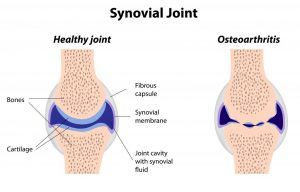 A study found in the Clinical Journal of Sports Medicine followed 22 patients with early stage knee osteoarthritis to examine the effect of Platelet Rich Plasma (PRP) on the patients’ pain and function. Patients’ ages were 30 to 70 years with an average age of 54 years, and all of them had experienced knee pain for about 14 months prior to the study. Early stage knee osteoarthritis in each patient was confirmed at the beginning of the study by MRI.
A study found in the Clinical Journal of Sports Medicine followed 22 patients with early stage knee osteoarthritis to examine the effect of Platelet Rich Plasma (PRP) on the patients’ pain and function. Patients’ ages were 30 to 70 years with an average age of 54 years, and all of them had experienced knee pain for about 14 months prior to the study. Early stage knee osteoarthritis in each patient was confirmed at the beginning of the study by MRI.
Each of the patients had twenty ml (about 4 teaspoons) of blood drawn and this blood was then spun down to a solution of 6 mls of concentrated platelets (a little more than 1 teaspoon). This concentrated PRP solution was injected into patients’ arthritic knee joints. All patients received one injection.
Patients were evaluated 5 times over the next 12 months for pain, stiffness, function, and ability to perform activities of daily living. MRIs were also obtained at these evaluation points to examine any structural changes in knee cartilage. Bias was controlled by having two musculoskeletal radiologists, who were unaware of the knees that received treatment, interpret the MRIs.
Six months after receiving the injection, patients rated their pain as reduced by a little more than 50% and pain remained reduced by 58.9% at one year. Patients rated their functional ability to perform activities of daily living as improved almost 25% one year later. Stiffness was reduced by 43% at 6 months and by 60% at one year. Activity of daily living scores improved at 6 months (46.8%) and one year (56.2%). There was no significant worsening of the arthritis on MRI in 80% of the treated knees 12 months after receiving treatment. This is interesting because studies have shown that cartilage in knees with osteoarthritis decrease, on average, by about 4-6% each year.
Other studies with larger number of patients have examined the effect of giving 3 PRP injections into the arthritic knee and noted improvement in pain, stiffness, function, and disease severity. It is noteworthy that the present study found significant clinical improvement after a single injection.
Several theories have been suggested to explain the outcomes associated with PRP. One theory is that PRP stimulates the body’s cartilage-building cells, that is, the chondrocytes and mesenchymal stem cells. Another theory is that platelets increase the secretion of the joint’s natural lubricant – hyaluronic acid. A third theory is that platelets inhibit inflammatory agents that are produced in the arthritic process that can cause cartilage deterioration.
Although more studies are needed, this study showed PRP to be promising in the treatment of early osteoarthritis. It should be noted that at Houston Spine and Sports Medicine, our current PRP process uses 3x more blood volume to receive up to 3x more PRP product that can be used in treating the knees or other musculoskeletal conditions. Also, PRP is usually done in a series of treatments and not usually just one treatment. It is safe to say that more studies are needed, however this is a good start.
Clinical and MRI Outcomes After Platelet-Rich Plasma Treatment for Knee Osteoarthritis. Halpern, B. et al. Clinical Journal of Sports Medicine (2013). 23(3):238-239.

I have had wonderful improvements with the
PRP injections in my knees. I’m 70 years old and have had knee pain since high school. Now my knees are pain free I am hoping to avoid knee replacement with the PRP treatments.
That is great to hear! So glad you are having such success with PRP treatments.
I’ve had multiple PRP injections over the course of the last few years. After every injection overall my knees overall feel better and I have the ability to do more activities. The docs at Houston Spine and Sports are great and they have really helped me this past year get back to doing all the activities I love.
Thank you for your comment! We are so glad to hear you have had success with your PRP treatments.
Some really wonderful work on behalf of the owner of this website, perfectly outstanding
subject matter.